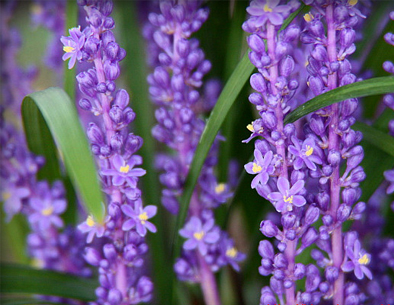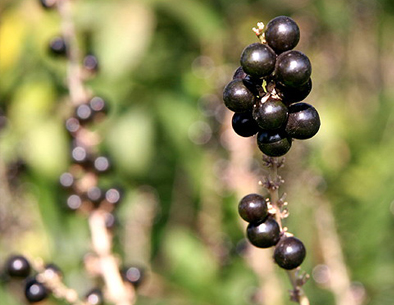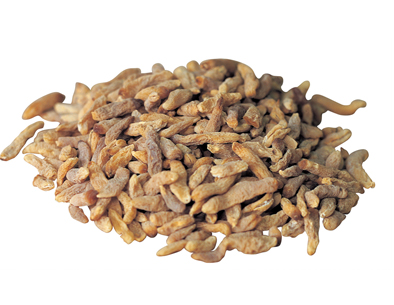Description
Details

Medicinal use of Snake's Beard: Liriope platyphylla (Snake’s Beard/Tian Men Dong)
The root is antitussive, aphrodisiac, expectorant, pectoral, sedative, sialogogue, stomachic and tonic. It is said to have anticancer activity. It is used internally in the treatment of dry coughs, fevers, thirst, dry constipation, insomnia, anxiety and palpitations. It is also frequently used in polyherbal treatments of diabetes mellitus. The roots have an antibacterial action, inhibiting the growth of Staphylococcus, E. coli, Bacillus subtilis, B. typhi etc. The roots are harvested in the spring and dried for later use. The plant is antipyretic, antiscrofulatic, antitussive, emollient, expectorant and tonic. Lowers blood pressure. Nodules on the fibrous roots are used as a nutritive tonic in the treatment of TB.

Habitat of the herb:
Damp ground in shady places in lowland and foothills.

Habitat of the herb: Edible parts of Snake's Beard: Root.
A bitterness should be removed according to some reports whilst another says that it is sweet and aromatic. Mucilaginous. The root contains about 1.6% protein, 0.5% fat, 80% carbohydrate, 2.3% ash.

Other uses of the herb: A good carpeting plant that spreads quite freely, it is commonly planted as a ground cover or as a low-maintenance grass substitute. It is particularly valuable for preventing soil erosion. Plants should be spaced about 45cm apart each way.
Propagation of Snake's Beard: Seed - best sown as soon as it is ripe in a sandy compost in a cold frame. When they are large enough to handle, prick the seedlings out into individual pots and grow them on in the cold frame for at least their first winter. Plant them out into their permanent positions in late spring or early summer, after the last expected frosts. Division in spring.
Advice to consumers
Some individuals may have adverse reactions to certain plants, herbs, and other natural products.
Just because something is natural does not mean it is safe for everyone.
On any issue where no specific advice is given to consumers please follow this general advice if you are currently taking the product:
you are advised to discontinue use and consult your pharmacist or herbal medical doctor.
when speaking to your doctor of pharmacist you may find it helpful to take a copy of this MHRA advice about the product with you
you should continue to take any medication prescribed by your doctor.
Additional
Additional
| Health Benefits | constipation, diuretic, fever, spurum |
|---|---|
| Directions | Wash 20g of herb roots on running water; boil for over 2 hours depending on symptom in 2L of water. |
| Product Package | Herb root, Paper sealed bag |
| Good herbal formulation | Platycodon Radix, Ulmi Cortex, Wilfordi Root |
| Storage Temperature | room temperature |
| Country of origin | Korea |
Reviews
FAQ
Frequently Asked Questions
A: Generally you boil 20g of tea/herb with 2L. of water. The ratio does not matter. However, it is recommended that you control the
saturation of the tea (how strong it is) depending on your personal
preference and body condition.
A: It depends on the tea/herb.
For leaves: boil for 15~20 min.
For hard fruits, roots, and stems: If you soak the tea/herb in water
for 1~2 hours before boiling, you can save time in boiling, and also
get a deeper flavor than without soaking.
A: Currently, what is listed on the site is what we mostly deal with in
retail stores. However, if there is a certain tea/herb that you wish to
get, you can send an email to info@leafnflower.com. or 844-344-0622.
Then, we may offer a price for obtaining the tea/herb, answer questions, and even offer purchase.
A: Yes, you can combine 5~10g of teas/herbs that you already have with Leafnflower.com's teas/herbs.
Although brewing one tea/herb is still good, combining 2~3 teas/herbs helps bring out
the remedial effects of the tea/herbs better than brewing just one tea/herb. However, most tea/herbs contain natural toxins,
and it is recommended that you boil 1~2 pieces of liquorice root along with the tea/herb to remove the toxin.

